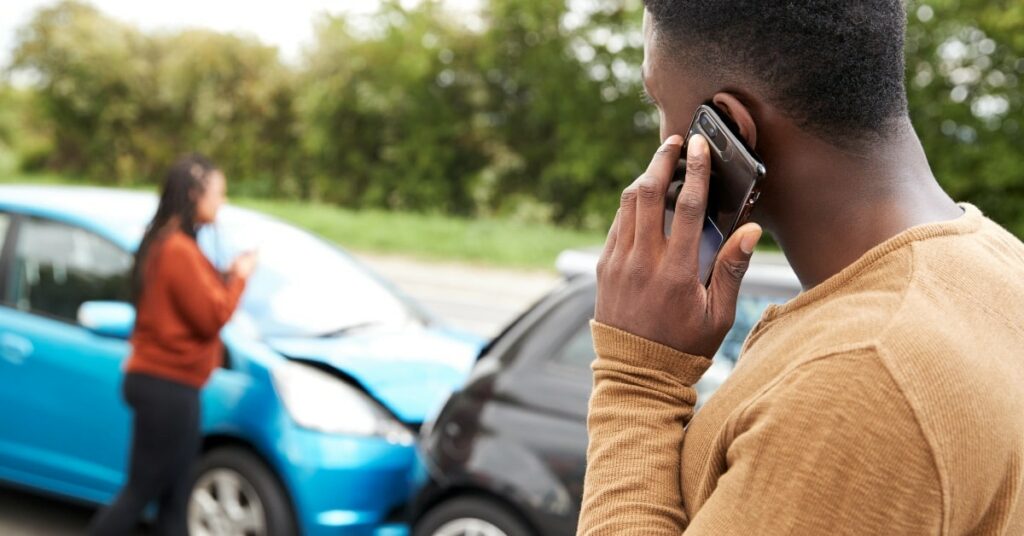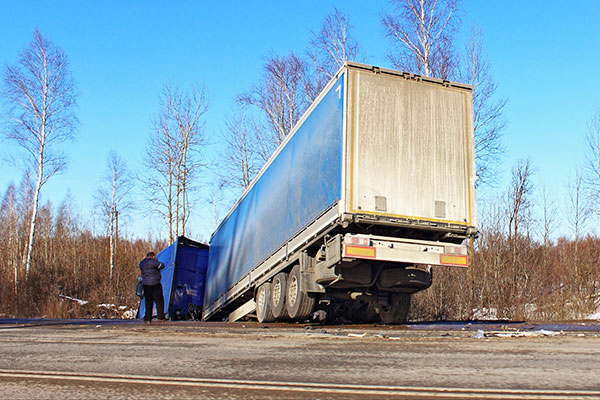Discover essential steps to take after a blind spot accident in Columbia to minimize your liability and maximize your compensation
Columbia, South Carolina, is a bustling city with busy roads and highways. Unfortunately, this can lead to a common and dangerous type of accident: blind spot collisions. If you’ve been injured in a blind spot accident in Columbia, this guide provides crucial information about your legal rights and the resources available to help you move forward.
Have additional questions after reading this article or need help filing a claim?
Reach out to the knowledgeable Columbia car accident attorneys at Chappell, Chappell & Newman for a free consultation.
Which vehicle has the most blind spots?
Larger motor vehicles like SUVs, vans, pickup trucks, and commercial trucks are known for having blind spots that compromise a driver’s ability to see everything around them. There’s a valid reason why drivers of these larger rigs are often reminded to “check their blind spots.”
Unfortunately, these blind spots put drivers of smaller vehicles at an increased risk of accidents, especially when a huge truck is involved, as it has more blind spots than the average passenger vehicle.
To add to the problem, many drivers aren’t aware that truck drivers can’t see them in certain situations, so it’s important to understand that, as a general rule of thumb, if you can’t see the driver in their side mirror, they can’t see you either.
In the News:
Blind spot trucking accidents
Blind spot accidents and close calls happen in South Carolina and across the U.S. every day. Here are just a few examples of blind spot crashes in the news recently:
- A South Carolina news station published a helpful article on close encounters with an 18-wheeler and what to do to avoid a big rig’s blind spots. Check out the Dangers of driving in a truck’s blind spot, the ‘No-Zone’ area.
- Dashcam video captured a crash between a truck and a car as the truck was passing and changing lanes. Both drivers lost control but managed to pull over before further tragedy ensued.
- State police in Oregon released dashcam video from a horrifying highway blind spot crash between a semi truck and a car—luckily, everyone involved was OK.
- A high-end sports car was damaged when a truck driver pulled out into traffic without checking the blind spot. Luckily, nobody was injured in the collision, according to authorities.
- This article states that blind spots are responsible for up to 400,000 truck-related accidents across the country, with more than 150,000 of the crashes leading to fatalities. The article dives into whether a trucker can be blamed for a blind spot accident.
Top causes of blind spot crashes in South Carolina
Blind spot crashes can occur anytime a vehicle is not visible in another driver’s field of vision or mirror range, leading to collisions typically during lane changes or merges. Here are some common causes of these crashes:
- Failure to check blind spots. One of the most frequent causes is simply not checking blind spots before making a lane change or merging. Relying solely on mirrors without physically checking can result in sideswipe crashes if vehicles are hidden from view.
- Poor mirror adjustment. If side mirrors or rearview mirrors are not properly adjusted to maximize the field of view, vehicles can disappear into these unmonitored areas. Proper adjustment can significantly reduce, but not completely eliminate, blind spots.
- High-speed lane changes. When vehicles speed or make sudden lane changes, especially on highways, it reduces the time for a driver to adequately check blind spots. The higher the speed, the less reaction time there is to avoid an accident.
- Heavy traffic. In dense traffic conditions, vehicles frequently move in and out of blind spots. The constant shifting can make it difficult to keep track of all vehicles, increasing the risk of collision.
- Small vehicles or motorcycles. Motorcycles, bicycles, and smaller cars can easily fit into a larger vehicle’s blind spots and remain undetected for longer periods, especially if they are overtaking or traveling at higher speeds than the flow of traffic.
- Distractions. Drivers who are distracted by phone calls, texting, adjusting the radio, or other activities inside the car may neglect to check blind spots properly before maneuvering.
- Poor conditions. In conditions of poor lighting, such as at dusk or dawn, or during adverse weather conditions like rain, fog, or snow, visibility is reduced, making it harder to see vehicles in blind spots.
Regularly adjusting mirrors, using technology like blind spot monitoring systems, and physically checking blind spots before changing lanes or merging can significantly reduce the risk of blind spot crashes.
Did you know?
Tailgating a truck is another common way that accidents, including blind spot crashes, occur, and the consequences can be deadly. Because trucks take longer to stop, drivers of other vehicles should always stay a comfortable distance behind them.
The Federal Motor Carrier Safety Administration (FMCSA) recommends allowing 1 second for every 10 feet of vehicle length while traveling under 40 miles per hour. So, for a 72-foot semi-tractor, you’d want to keep at least 7 seconds of distance between you and the truck at that speed to minimize the chance of an accident.
Aggressive Driving and Road Rage Accidents in South Carolina
Learn the difference between aggressive driving and road rage and how these types of accidents can be avoided.
What to do after a blind spot accident in Columbia
A blind spot accident between a truck and a small car or a motorcycle can be especially devastating for those involved. Victims are often left with catastrophic injuries, so they need to take appropriate steps to protect their safety and rights after an accident.
- The first step is to call the police to report the accident. Having a police report can be crucial for insurance claims and legal purposes, especially to establish the facts of the accident.
- Next, document the scene of the accident if you’re physically able to do so. Anything of consequence should be photographed, such as skid marks, damage to your vehicle and the other vehicle, damages to structures, traffic signs, your injuries, and any weather or road conditions that might have contributed to the accident. If you find witnesses, ask for their names and contact information and request their statements by writing or by recording them on your phone.
- The first thing you should do when you leave the scene is seek immediate medical attention. Even if you feel fine, you should still get checked out, as you might have injuries with delayed symptoms or internal injuries that require urgent medical care. Medical attention also provides documentation of your injuries, which can be used as evidence if you file a personal injury lawsuit.
- Next, you should inform your insurance company about the accident as soon as possible. Provide them with the basic details of the accident, but if you’re asked to provide a more detailed statement, it might be wise to say that you will provide further details after consulting with your attorney. This is particularly important if there are potential injuries or significant damage.
- If you suffered serious injuries or there are questions about who’s liable for the accident, you should contact an experienced truck accident attorney to protect your rights and increase your chance of a successful case.
How a Columbia car accident attorney can help after a blind spot accident
After a blind spot accident, navigating the complexities of insurance claims and potential legal issues can be daunting, especially when determining liability is challenging.
An attorney can play a crucial role in minimizing your liability by gathering and analyzing evidence to support your claim after a blind spot accident. This includes collecting surveillance footage, dashcam videos, police reports, and witness statements and consulting experts for insights into the cause of the accident to build a strong case for you.
Your attorney can handle all negotiations with insurance companies. Insurers often attempt to settle claims quickly and for as little as possible, which may not cover all your expenses or losses. An attorney with experience in such matters will know how to negotiate effectively to ensure you receive fair compensation that covers medical bills, lost wages, vehicle repairs, and other damages like pain and suffering.
If negotiations fail, they can prepare to take the matter to court and advocate on your behalf, ensuring that you’re not undervalued or overlooked by insurance adjusters.
Common Causes of Truck Crashes
Learn about common causes of truck crashes and the types of injuries accident victims are most likely to suffer.
Legal resources for Columbia, SC car accident victims
If you were involved in a blind spot accident with a truck, you need all the resources you can get to help your claim.
To file a police report about the crash, visit the Columbia Police Department Accident Reporting site, where you will be guided through a set of questions about the incident.
If you have serious injuries, seek medical attention from a local medical center that specializes in trauma care. A couple notable ones are Prisma Health Richland Hospital Trauma Center and Lexington Medical Center.
If you need help finding a car accident attorney, you can check out the South Carolina Bar Association. Choose the “For the Public” option to search for a qualified lawyer in your area.
Looking for the best Columbia car accident attorney to help with your blind spot accident claim?
Blind spot accidents can leave you with serious injuries and mounting medical bills that make your recovery feel overwhelming. By understanding your rights and seeking legal guidance from an attorney who specializes in these types of claims, you can take control of the situation and focus on your health.


